[javascript protected email address]
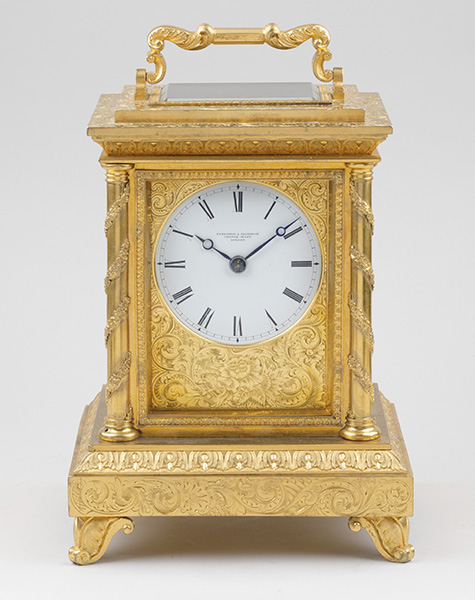
Parkinson & Frodsham, Change Alley, Cornhill, London

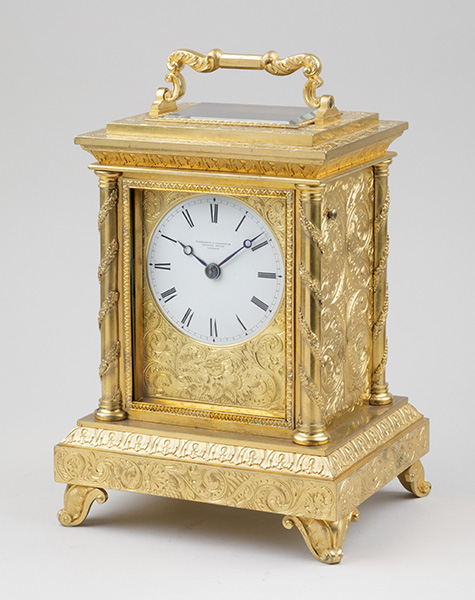
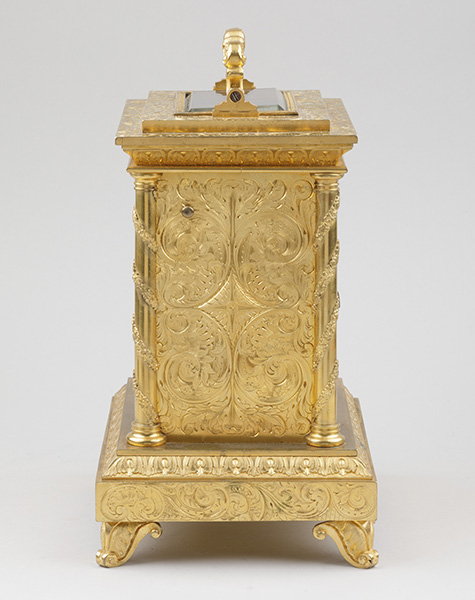
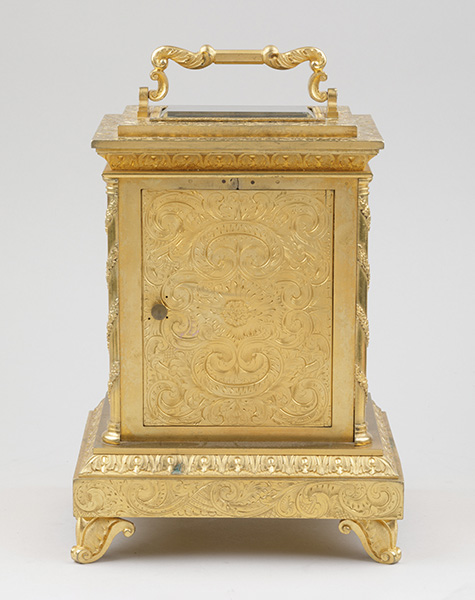
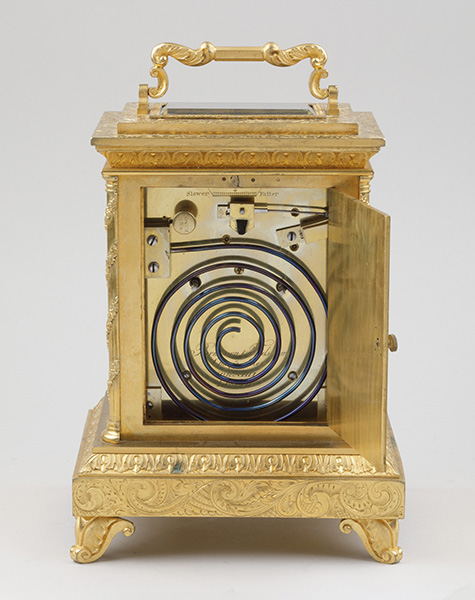
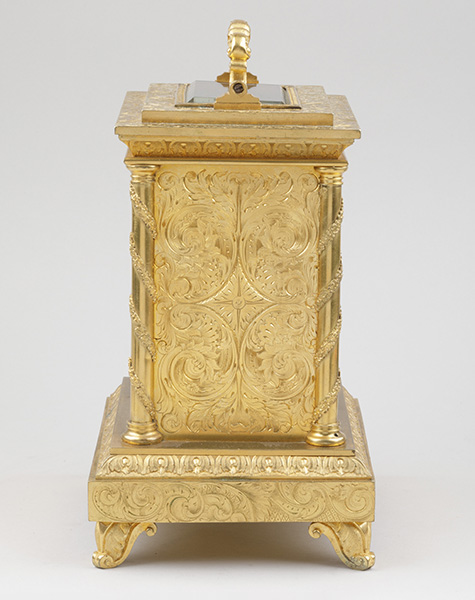
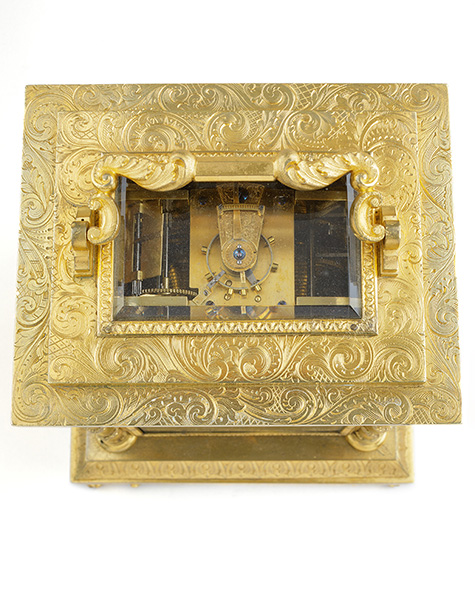
Circa 1835
Sold
8 ½ inches high
A beautifully engraved gilt-brass striking mantel clock with platform escapement and trip repeat. Case Very finely engraved overall with scrolling foliage in geometric panels, foliate-cast carrying handle to the stepped top inset with a glazed escapement viewing aperture, repeat button to the right-side panel, the acanthus-moulded base on foliate scroll feet. Dial Signed Parkinson & Frodsham Change Alley, London on a white enamel dial with Roman numerals and blued steel hands. Movement Very substantial movement with twin chain fusees with maintaining power and spring barrels, strike/repeat on a gong on the fully signed backplate, going train with gilt platform with a cut bimetallic balance and underslung lever escapement. Provenance This clock is illustrated in Carriage and other Travelling clocks by Derek Roberts on page 284 Fig. 19-7. In the description it suggests that its highly decorative exceptional quality case possibly indicates that it may have been made for the Indian market The clock, watch and chronometer making dynasty of Parkinson & Frodsham was established in 1801 by William James Frodsham 1778-1850 and William Parkinson d. 1842. It traded from 4 Change Alley 1801-90 where the present clock was made and then 16 Queen Victoria Street 1891-2, 35 Royal Exchange 1893-5, 15B Royal Exchange 1896-1905 and 5 Budge Row 1906-47. Initially the firm specialised in marine and pocket chronometers and domestic clocks. It had an extensive export business and supplied the Admiralty and numerous shipping companies. After the founders' deaths the business was continued by Frodsham's elder sons and grandson until 1912, when the name and business were sold to the foreman, William Harris. Harris and his son Geoffrey ran the business successfully until 1944 when the firm's premises in Budge Row were bombed. Geoffrey Harris worked for a time from home, but Parkinson and Frodsham ceased trading in 1947.
